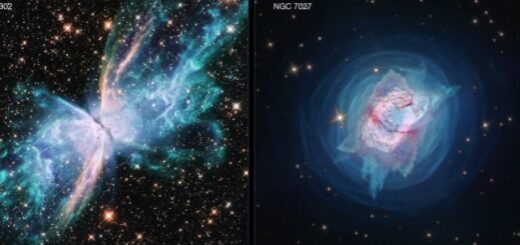Buckle up, space tourists! Blue Origin on track to launch people next year

LAS CRUCES, N.M. — The final frontier could start opening up to the masses — well, the wealthy masses, at least — very soon.
After last week’s successful “in-flight escape test” of its reusable New Shepard vehicle, Blue Origin is just a year or so away from launching people to suborbital space, company representatives said.
“This test got us one step closer to human spaceflight,” Blue Origin President Rob Meyerson said Thursday at the 2016 International Symposium for Personal and Commercial Spaceflight (ISPCS). “We’re still on track for flying people — our test astronauts — by the end of 2017, and then starting commercial flights in 2018.” [In Photos: Blue Origin’s In-Flight Abort Launch & Landing]
New Shepard consists of a rocket and a capsule, which Blue Origin is developing to fly people and payloads to suborbital space. On Oct. 5, the capsule used its onboard escape motor to blast itself away from the booster during an uncrewed test flight designed to show how the vehicle would behave in the event of a real-life launch emergency.
Everything worked well, Meyerson said, describing it as a “picture-perfect test.” The capsule came back to Earth softly under parachutes, as expected. The booster managed to land softly as well, coming in for a vertical touchdown back at the West Texas launch pad.
This latter feat came as a surprise, Meyerson said: The thrust from the capsule’s escape motor was expected to knock the booster off-kilter, sending it to a dramatic, fiery death on the desert floor.
“We were pretty certain we were going to lose it,” Meyerson said of the rocket today.
The landing marked the fifth successful one for that same New Shepard booster after a suborbital flight. But last week’s test was the rocket’s final mission; billionaire Blue Origin (and Amazon.com) founder Jeff Bezos has said the rocket will be put on display in a museum.
“Which museum is to be determined, and Jeff Bezos will make that decision,” Meyerson said. “We’re going to start thinking about that shortly.”
Bezos has said that he founded Blue Origin with the aim of helping to get millions of people living and working in space. Reusability is key to this vision; landing and then re-launching rockets will slash the cost of spaceflight, allowing many more people to fly, the entrepreneur has said.
Fellow billionaire Elon Musk, the founder and CEO of SpaceX, shares this assessment. SpaceX is also developing reusable rockets in an effort to make spaceflight much more affordable, and has succeeded in landing the first stage of its Falcon 9 rocket six times during missions to Earth orbit. (Musk has his eyes on Mars; last month, he unveiled SpaceX’s plans to help start a million-person colony on the Red Planet.)
New Shepard is just one step in Blue Origin’s grander vision. Last month, the company announced that it’s developing a vehicle called New Glenn to take people and satellites to orbit — and Bezos has mentioned another project on the drawing board, called New Armstrong, but has given no details about this latter effort.
Blue Origin has not yet disclosed how much a ticket to ride the six-passenger New Shepard vehicle will cost. Virgin Galactic, which plans to fly people on suborbital jaunts aboard a space plane called SpaceShipTwo, is currently charging $250,000 per seat, if that’s any guide.
Virgin Galactic President Mike Moses also gave a presentation here today at ISPCS detailing the company’s progress, which was slowed by a tragic fatal crash during a rocket-powered test flight in October 2014.
That crash destroyed a vehicle known as VSS Enterprise. In February, Virgin unveiled its newly built SpaceShipTwo, which is known as VSS Unity. Last month, Unity conducted its first “captive carry” test flight beneath Virgin’s WhiteKnightTwo carrier aircraft. (SpaceShipTwo is designed to be dropped from this mothership at an altitude of about 50,000 feet, or 15,000 meters, and then blast itself to suborbital space using its onboard rocket motor.)
The captive carry test went well, Moses said, and Virgin does not plan to perform another one. Rather, Unity will next conduct an unpowered “glide flight,” in which it’s dropped at altitude by WhiteKnightTwo and then comes in for a runway landing.
“We’re getting really close to that,” Moses said. “In fact, we’re probably just a month or two away from [being] ready to start our glide-flight program.”
Rocket-powered tests — the phase Enterprise was in before the October 2014 tragedy — will begin after Unity completes the glide program.



 Creators of mankind
Creators of mankind Description of “Tall white aliens”
Description of “Tall white aliens” Where they came from?
Where they came from? About hostile civilizations
About hostile civilizations The war for the Earth
The war for the Earth “Tall white aliens” about eternal life
“Tall white aliens” about eternal life Video: “Nordic aliens”
Video: “Nordic aliens” Aliens
Aliens Alien encounters
Alien encounters The aliens base
The aliens base UFO
UFO Technology UFO
Technology UFO Underground civilization
Underground civilization Ancient alien artifacts
Ancient alien artifacts Military and UFO
Military and UFO Mysteries and hypotheses
Mysteries and hypotheses Scientific facts
Scientific facts


















